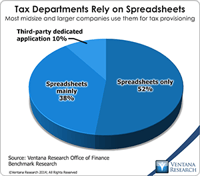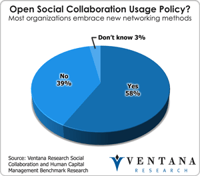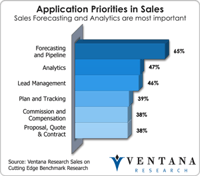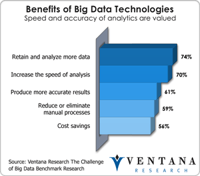The steady march of technology’s ability to handle ever more complicated tasks has been a constant since the beginning of the information age in the 1950s. Initially, computers in business were used to automate simple clerical functions, but as systems have become more capable, information technology has been able to substitute for increasingly higher levels of human skill and experience. A turning point of sorts was reached in the 1990s when ERP, business intelligence and business process...
Read More
Topics:
Sustainability,
ERP,
Governance,
GRC,
Human Capital,
Office of Finance,
audit,
finance transformation,
LongView,
Tax,
Analytics,
Business Analytics,
Business Performance,
Financial Performance,
Oracle,
CFO,
Risk & Compliance (GRC),
Vertex,
FPM,
Innovation Awards,
Thomson-Reuters multinational
In the realm of technology that matters for business and IT, our firm as part of our responsibility continually assesses the latest technology and how it can impact organizations’ efficiency and effectiveness. Our benchmark research in technology innovation found that 87% of participants indicated the importance of increasing the organization’s value through technology innovation. Every year we take our knowledge from research and technology briefings to focus on our Technology Innovation Awards
Read More
Topics:
Big Data,
Datameer,
Mobile,
Sales,
Sales Performance,
Social Media,
Supply Chain Performance,
Sustainability,
Customer,
ESRI,
Globoforce,
GRC,
HCM,
Kronos,
Kyriba,
Location Analytics,
Marketing,
NetBase,
Office of Finance,
Overall Operational Leadership,
Peoplefluent,
Planview,
SQLstream,
VMWare,
VPI,
IT Analytics & Performance,
IT Performance,
Operational Performance,
Analytics,
Business Analytics,
Business Collaboration,
Business Intelligence,
Business Mobility,
Business Performance,
CIO,
Cloud Computing,
Collaboration,
Customer & Contact Center,
Financial Performance,
Governance, Risk & Compliance (GRC),
Hortonworks,
IBM,
Informatica,
Information Applications,
Information Builders,
Information Management,
Information Technology,
KXEN,
Location Intelligence,
Operational Intelligence,
Oracle,
Workforce Performance,
Contact Center,
Datawatch,
Financial Management,
Information Optimization,
Johnson Controls Panoptix,
Roambi,
Service & Supply Chain,
Upstream Works,
Vertex,
Xactly
The International Integrated Reporting Council (IIRC) recently published a draft framework outlining how it believes businesses ought to communicate with their stakeholders. In this context the purpose of an “integrated report” is to promote corporate transparency by clearly and concisely presenting how an organization’s strategy, governance, and financial and operational performance will create value for shareholders and other stakeholders in both the short and the long term. Such a report...
Read More
Topics:
Sustainability,
Office of Finance,
closing,
XBRL,
Operational Performance,
Business Analytics,
Business Intelligence,
Business Performance,
Customer & Contact Center,
Financial Performance,
Information Applications,
Information Management,
financial reporting,
FPM,
SASB,
SEC
In my last rant, on business analytics and the pathetic state of dashboards, I pointed out significant flaws in business intelligence software created by technology providers and in how it is being deployed by business and IT. Now I want to follow up with some insight on disconnects to a critical asset that is essential to the success of business analytics. I mean key performance indicators (KPIs), a term used in inaccurate ways that have diminished the value of the concept for business.
Read More
Topics:
Sales Performance,
Social Media,
Supply Chain Performance,
Sustainability,
KPI,
IT Performance,
Key Performance Indicators,
Operational Performance,
Business Analytics,
Business Collaboration,
Business Intelligence,
Business Performance,
Cloud Computing,
Customer & Contact Center,
Financial Performance,
Governance, Risk & Compliance (GRC),
Information Applications,
Information Management,
Location Intelligence,
Operational Intelligence,
Workforce Performance
Our research agenda for 2012 in human capital management outlined the importance of workforce management for all organizations. One provider, WorkForce Software, provides systems that support scheduling, time and attendance, leave and absence and fatigue management. As I noted in my last analysis on WorkForce Software, the company’s focus on the fatigue aspect of workforce management, especially in white-collar environments such as transportation, utilities and healthcare, has provided them...
Read More
Topics:
Big Data,
Sales Performance,
SAP,
Social Media,
Supply Chain Performance,
Sustainability,
Human Capital Management,
SuccessFactors,
Business Technology Innovation,
IT Performance,
IT Research,
Operational Performance,
Business Analytics,
Business Collaboration,
Business Intelligence,
Business Mobility,
Business Performance,
Cloud Computing,
Customer & Contact Center,
Financial Performance,
Governance, Risk & Compliance (GRC),
Information Applications,
Information Management,
Location Intelligence,
Operational Intelligence,
Workforce Performance,
HTML5,
Time & Attendance,
Workforce Management
The use of social collaboration to support human capital management is increasing as the need to engage talent becomes a higher priority in organizations. In particular, those that have a growing population of workers from the millennial generation see social media as a primary means of communication. Social collaboration is growing in acceptance – 58 percent of organizations now permit it, according to our benchmark research on social collaboration and human capital management (HCM). For many...
Read More
Topics:
Sales Performance,
Social Media,
Supply Chain Performance,
Sustainability,
Globoforce,
Human Capital Management,
Social Collaboration,
Social Recognition,
IT Performance,
Operational Performance,
Business Analytics,
Business Collaboration,
Business Intelligence,
Business Mobility,
Business Performance,
Cloud Computing,
Customer & Contact Center,
Financial Performance,
Governance, Risk & Compliance (GRC),
Information Applications,
Information Management,
Location Intelligence,
Operational Intelligence,
Workforce Performance
It’s clear that sales organizations need to be efficient, but many are unaware of critical applications they could deploy to establish sales excellence. In my recent analysis, “Sales Organizations Need a Swift Technology Kick”, I outlined why sales departments have to look beyond using sales force automation (SFA) and spreadsheets and examine dedicated applications for improving productivity and effectiveness. Our benchmark research in sales applications found a new set of application...
Read More
Topics:
Sales,
Sales Performance,
Social Media,
Supply Chain Performance,
Sustainability,
Sales Forecasting,
IT Research,
Operational Performance,
Business Analytics,
Business Collaboration,
Business Intelligence,
Business Mobility,
Business Performance,
Cloud Computing,
Customer & Contact Center,
Financial Performance,
Governance, Risk & Compliance (GRC),
Information Applications,
Information Management,
Location Intelligence,
Operational Intelligence,
Workforce Performance,
SFA
More than 1,000 people attended the 32nd annual Information Builders Summit conference this week to learn about the company’s advances in big data, business analytics, cloud computing, mobile technology and social media, which CEO and founder Gerald Cohen announced and demonstrated during his keynote address. With WebFOCUS version 8, Information Builders has made significant strides in a range of technology areas to support analytics and visualization since my analysis after last year’s...
Read More
Topics:
Big Data,
Mobile,
Sales Performance,
Social Media,
Supply Chain Performance,
Sustainability,
Business Technology Innovation,
IT Performance,
IT Research,
Operational Performance,
Analytics,
Business Analytics,
Business Collaboration,
Business Intelligence,
Business Performance,
Cloud Computing,
Customer & Contact Center,
Financial Performance,
Governance, Risk & Compliance (GRC),
Information Applications,
Information Management,
Location Intelligence,
Operational Intelligence,
Workforce Performance,
Search
This week Peoplefluent announced that it has invested in Socialtext, a company that provides social collaboration software at the enterprise level. With this strategic investment Bedford Funding, the private equity firm that owns Peoplefluent, is the direct beneficiary. Peoplefluent will extend Socialtext into the human capital management market while continuing to let the company meet the broader market interest in its offering. Peoplefluent has moved quickly to make this application and...
Read More
Topics:
Sales Performance,
Social Media,
Sustainability,
Human Capital Management,
LMS,
Peoplefluent,
Performance,
Recruiting,
Research,
SocialText,
Business Analytics,
Business Collaboration,
Business Mobility,
Business Performance,
Cloud Computing,
Financial Performance,
Governance, Risk & Compliance (GRC),
Information Applications,
Information Management,
Mobility,
Workforce Performance,
Compensation,
HR,
HRMS,
Talent Management,
Workforce Analytics
Competition in the human capital management market rages on, with application suppliers racing to provide sophisticated applications that operate in the cloud. Cloud computing is a key factor in advancing human capital management, included in our research agenda for this area, along with analytics, collaboration, mobility and social media.
Read More
Topics:
Sales Performance,
SAP,
Social Media,
Sustainability,
Human Capital Management,
LMS,
Performance,
Recruiting,
Research,
Business Analytics,
Business Collaboration,
Business Mobility,
Business Performance,
Cloud Computing,
Financial Performance,
Governance, Risk & Compliance (GRC),
Information Applications,
Information Management,
Mobility,
Oracle,
Workforce Performance,
Compensation,
HR,
HRMS,
Talent Management,
Workday,
Workforce Analytics














